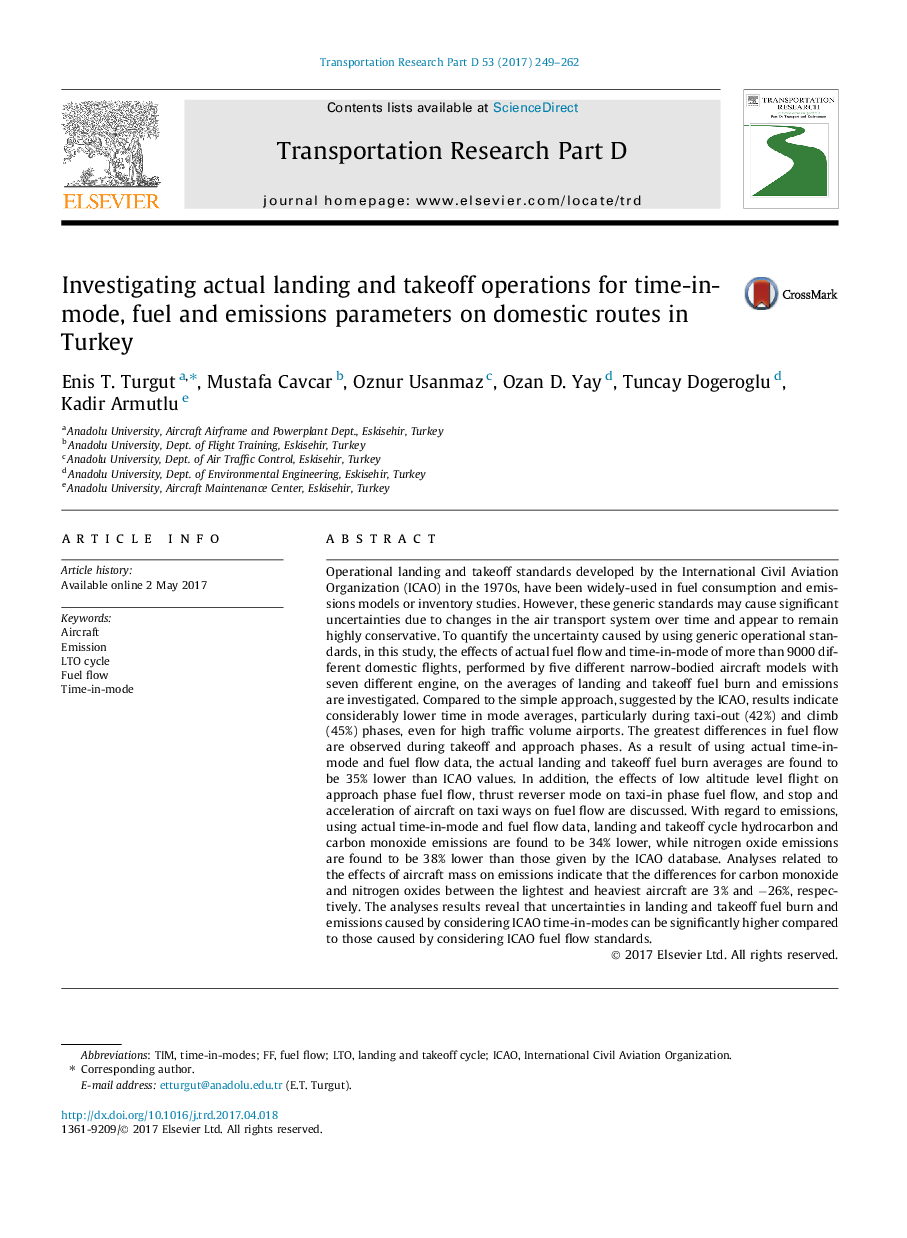| کد مقاله | کد نشریه | سال انتشار | مقاله انگلیسی | نسخه تمام متن |
|---|---|---|---|---|
| 5119430 | 1485871 | 2017 | 14 صفحه PDF | دانلود رایگان |
- We investigate the effects of actual TIM and FF on LTO procedures.
- The actual TIM and FF yields 35% lower fuel burn compared to the ICAO.
- TIM uncertainties compromise results to a far greater extent than those for FF.
- We examine low level flights, stop-acceleration during taxi, thrust reversing.
- We report correlations with aircraft mass and LTO emissions.
Operational landing and takeoff standards developed by the International Civil Aviation Organization (ICAO) in the 1970s, have been widely-used in fuel consumption and emissions models or inventory studies. However, these generic standards may cause significant uncertainties due to changes in the air transport system over time and appear to remain highly conservative. To quantify the uncertainty caused by using generic operational standards, in this study, the effects of actual fuel flow and time-in-mode of more than 9000 different domestic flights, performed by five different narrow-bodied aircraft models with seven different engine, on the averages of landing and takeoff fuel burn and emissions are investigated. Compared to the simple approach, suggested by the ICAO, results indicate considerably lower time in mode averages, particularly during taxi-out (42%) and climb (45%) phases, even for high traffic volume airports. The greatest differences in fuel flow are observed during takeoff and approach phases. As a result of using actual time-in-mode and fuel flow data, the actual landing and takeoff fuel burn averages are found to be 35% lower than ICAO values. In addition, the effects of low altitude level flight on approach phase fuel flow, thrust reverser mode on taxi-in phase fuel flow, and stop and acceleration of aircraft on taxi ways on fuel flow are discussed. With regard to emissions, using actual time-in-mode and fuel flow data, landing and takeoff cycle hydrocarbon and carbon monoxide emissions are found to be 34% lower, while nitrogen oxide emissions are found to be 38% lower than those given by the ICAO database. Analyses related to the effects of aircraft mass on emissions indicate that the differences for carbon monoxide and nitrogen oxides between the lightest and heaviest aircraft are 3% and â26%, respectively. The analyses results reveal that uncertainties in landing and takeoff fuel burn and emissions caused by considering ICAO time-in-modes can be significantly higher compared to those caused by considering ICAO fuel flow standards.
Journal: Transportation Research Part D: Transport and Environment - Volume 53, June 2017, Pages 249-262
